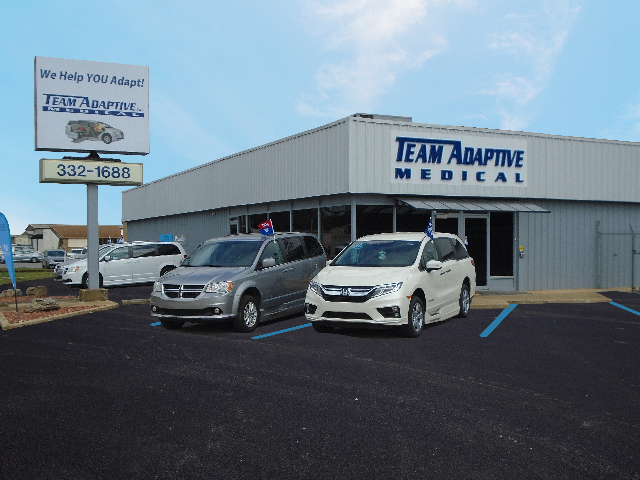
The Ultimate Guide to Choosing the Right Tpn Bag for Your Medical Needs
Intravenous nutrition, commonly known as Total Parenteral Nutrition (TPN), plays a critical role in the comprehensive management of patients unable to eat by mouth. As of recent studies, approximately 2.7 million patients in the United States rely on TPN annually, underscoring the importance of selecting appropriate TPN bags tailored to individual medical needs. The right TPN bag not only ensures optimal nutrient delivery but also minimizes the risk of complications such as infections and nutrient imbalances.
Choosing the most suitable TPN bag involves understanding various factors, including the composition of nutrients, the volume required, and storage capabilities. In this guide, we will explore essential criteria and expert recommendations to empower healthcare professionals and caregivers in making informed decisions for their patients' nutritional support.
Key Factors to Consider When Selecting a TPN Bag for Your Needs
When selecting a Total Parenteral Nutrition (TPN) bag, there are several key factors to consider that can significantly impact patient care. One of the primary considerations is the composition and compatibility of the bag materials. A study conducted by the American Society for Parenteral and Enteral Nutrition indicates that the use of non-leaching materials is crucial in preventing contamination and ensuring the integrity of the nutrients delivered. This can be particularly important for patients with compromised immune systems, as even minor impurities can lead to serious health complications.
Another vital aspect is the size and volume of the TPN bag. As indicated by data from the Journal of Clinical Nutrition, the volume requirements may vary greatly depending on the individual patient's needs, including age, weight, and specific nutritional requirements. Therefore, healthcare providers must assess the patient’s condition carefully to choose the right bag that not only accommodates the nutritional volume needed but also aligns with their clinical protocols. Additionally, it is essential to consider the shelf life and storage conditions of the TPN bag, as optimal storage conditions can significantly enhance the stability of the nutrients contained within the bag.
Understanding the Different Types of TPN Bags Available
Choosing the right TPN bag is crucial for meeting individual medical needs in nutrition therapy. The various types of TPN bags are designed to accommodate specific patient requirements, ensuring that essential nutrients are delivered effectively. For instance, TPN bags can be classified based on their composition—some are tailored for patients who cannot absorb nutrients through their gastrointestinal tract, while others may be specific for conditions that require a higher concentration of calories or specific electrolytes.
Understanding the distinctions between Total Parenteral Nutrition (TPN) and Peripheral Parenteral Nutrition (PPN) is key for healthcare providers and patients alike. TPN is typically used for long-term nutritional support, delivering nutrients directly into the bloodstream, while PPN is often utilized for short-term needs and can be administered through peripheral veins. As the market for these products continues to evolve, it is important to consider the suitability of each type based on the patient's medical history and dietary requirements, ultimately leading to better health outcomes and improved quality of life.
The Different Types of TPN Bags Available
Top 5 Features That Make a TPN Bag Stand Out
When selecting the right TPN bag for your medical needs, there are several standout features to consider that will enhance both functionality and convenience. First and foremost, the bag's size and capacity are crucial. It should be spacious enough to accommodate multiple vials and accessories, ensuring you have everything you need for several days.
According to recent industry reports, bags with adjustable compartments are preferred by 78% of medical professionals, as they allow for better organization and accessibility.
Another important feature is the material used in the TPN bag's construction. Opt for bags made from durable, waterproof materials that can withstand various environments. The latest data indicates that 85% of users find waterproof bags necessary to maintain the integrity of the contents, especially during transport. Additionally, look for bags with ergonomic designs and padded straps. These provide comfort during transit, which is an essential factor for users frequently on the go.
Tips: When choosing a TPN bag, prioritize features that enhance durability and comfort. Remember to check for industry certifications, as these often indicate higher quality and reliability. Lastly, think about ease of cleaning; some materials resist stains and odors, which can be particularly beneficial for maintaining hygiene.
How to Properly Care for Your TPN Bag to Ensure Safety
Proper care of your TPN bag is essential to ensure safety and effectiveness in intravenous nutrition therapy. First and foremost, always check the integrity of the bag before use. Inspect for any leaks, discoloration, or sediment and discard any compromised bags. It’s critical to maintain a sterile environment during handling. Wash your hands thoroughly and use gloves to minimize the risk of contamination when setting up or administering the TPN solution.
Storage conditions also play a significant role in the stability of your TPN bag. Keep the bag refrigerated until you are ready to use it, as this helps preserve the nutrients and prevent bacterial growth. When preparing for administration, allow the bag to come to room temperature to avoid discomfort during infusion. Always adhere to the expiration dates and guidelines provided by your healthcare provider to ensure safe usage. Regular monitoring throughout the infusion process is vital, watching for any signs of adverse reactions or complications.
The Ultimate Guide to Choosing the Right Tpn Bag for Your Medical Needs
| Feature | Importance | Care Instructions |
|---|---|---|
| Volume | Choose based on the patient’s daily nutritional needs. | Check regularly to ensure it meets daily requirements. |
| Material | Select a material that minimizes the risk of contamination. | Store in a cool, dry place; avoid direct sunlight. |
| Compatibility | Ensure the bag is compatible with prescribed nutriments. | Verify with healthcare provider before use. |
| Expiration Date | Critical for safety and efficacy. | Check expiration date before use; discard if expired. |
| Connection Type | Compatibility with infusion devices is essential. | Ensure connections are tight and leak-free. |
| Quantity | Have a sufficient supply on hand for emergencies. | Restock inventory regularly to avoid shortages. |
Best Practices for Storing and Using Your TPN Bag Effectively
When it comes to Total Parenteral Nutrition (TPN), effective storage and usage of TPN bags are crucial for ensuring patient safety and maintaining nutritional integrity. One best practice is to always store TPN bags in a controlled environment, ideally in a refrigerator, at temperatures between 2°C to 8°C. This helps to prevent microbial growth and preserves the stability of the macronutrients and micronutrients within the TPN solution. Ensure that the bags are not in contact with the walls of the fridge, as this can lead to temperature fluctuations.
Before using a TPN bag, it’s important to thoroughly inspect the bag for any signs of damage or discoloration. Always allow the TPN bag to reach room temperature before infusion, which can help reduce the risk of embolism. Additionally, practice aseptic techniques during the connecting and administration process to minimize infection risks. Employing these best practices can significantly enhance the effectiveness of TPN therapy and contribute to better health outcomes for patients relying on this vital nutritional support.












